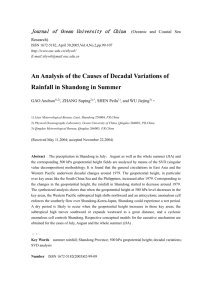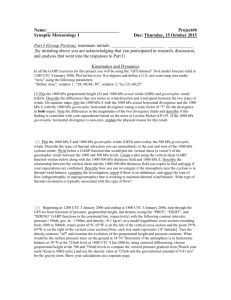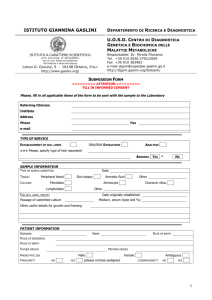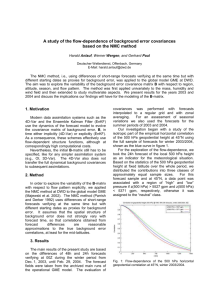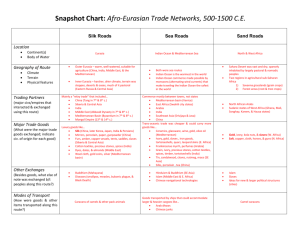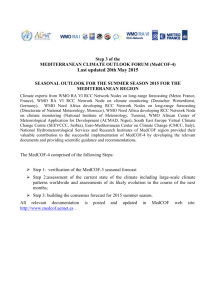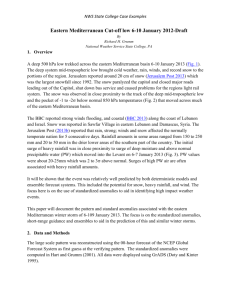Supplementary Material Article Title: Impact of Cold Air Surges on
advertisement
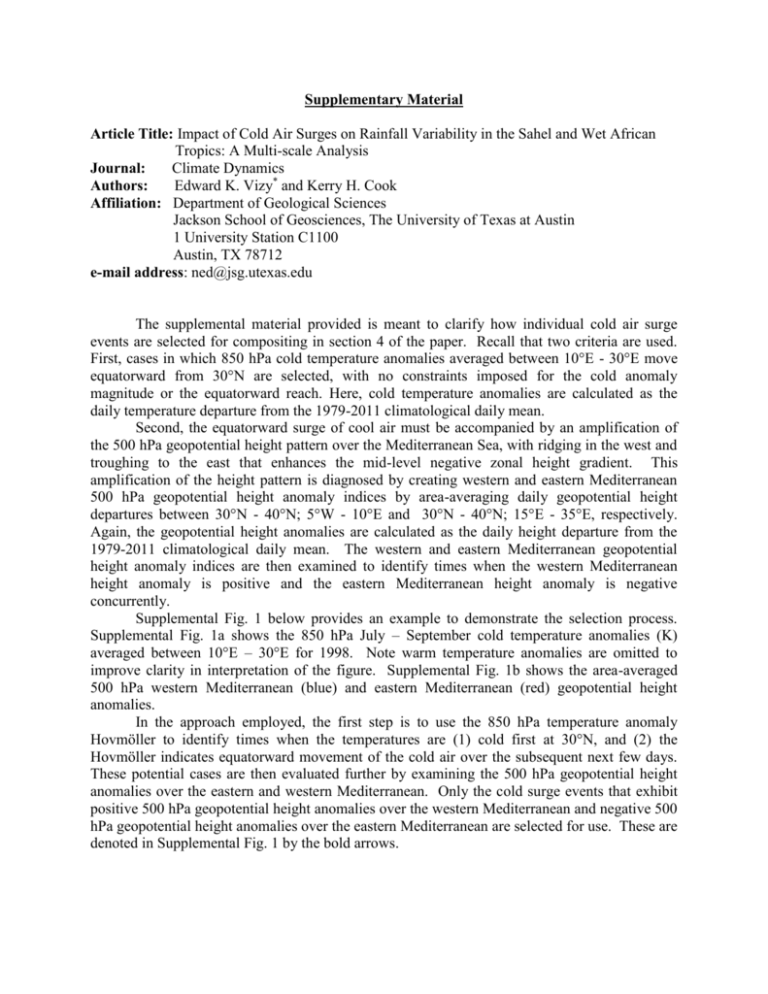
Supplementary Material Article Title: Impact of Cold Air Surges on Rainfall Variability in the Sahel and Wet African Tropics: A Multi-scale Analysis Journal: Climate Dynamics Authors: Edward K. Vizy* and Kerry H. Cook Affiliation: Department of Geological Sciences Jackson School of Geosciences, The University of Texas at Austin 1 University Station C1100 Austin, TX 78712 e-mail address: ned@jsg.utexas.edu The supplemental material provided is meant to clarify how individual cold air surge events are selected for compositing in section 4 of the paper. Recall that two criteria are used. First, cases in which 850 hPa cold temperature anomalies averaged between 10°E - 30°E move equatorward from 30°N are selected, with no constraints imposed for the cold anomaly magnitude or the equatorward reach. Here, cold temperature anomalies are calculated as the daily temperature departure from the 1979-2011 climatological daily mean. Second, the equatorward surge of cool air must be accompanied by an amplification of the 500 hPa geopotential height pattern over the Mediterranean Sea, with ridging in the west and troughing to the east that enhances the mid-level negative zonal height gradient. This amplification of the height pattern is diagnosed by creating western and eastern Mediterranean 500 hPa geopotential height anomaly indices by area-averaging daily geopotential height departures between 30°N - 40°N; 5°W - 10°E and 30°N - 40°N; 15°E - 35°E, respectively. Again, the geopotential height anomalies are calculated as the daily height departure from the 1979-2011 climatological daily mean. The western and eastern Mediterranean geopotential height anomaly indices are then examined to identify times when the western Mediterranean height anomaly is positive and the eastern Mediterranean height anomaly is negative concurrently. Supplemental Fig. 1 below provides an example to demonstrate the selection process. Supplemental Fig. 1a shows the 850 hPa July – September cold temperature anomalies (K) averaged between 10°E – 30°E for 1998. Note warm temperature anomalies are omitted to improve clarity in interpretation of the figure. Supplemental Fig. 1b shows the area-averaged 500 hPa western Mediterranean (blue) and eastern Mediterranean (red) geopotential height anomalies. In the approach employed, the first step is to use the 850 hPa temperature anomaly Hovmöller to identify times when the temperatures are (1) cold first at 30°N, and (2) the Hovmöller indicates equatorward movement of the cold air over the subsequent next few days. These potential cases are then evaluated further by examining the 500 hPa geopotential height anomalies over the eastern and western Mediterranean. Only the cold surge events that exhibit positive 500 hPa geopotential height anomalies over the western Mediterranean and negative 500 hPa geopotential height anomalies over the eastern Mediterranean are selected for use. These are denoted in Supplemental Fig. 1 by the bold arrows. Supplemental figure 1. 1998 July – September daily (a) 850 hPa cold temperature anomalies (K) averaged between 10°E – 30°E, and (b) area-averaged 500 hPa geopotential height anomalies (m) over the western (blue; 5°W - 10°E; 30°N - 40°N ) and eastern (red; 15°E - 35°E; 30°N 40°N) Mediterranean. Bold arrows denote cold air surge events selected for compositing.
